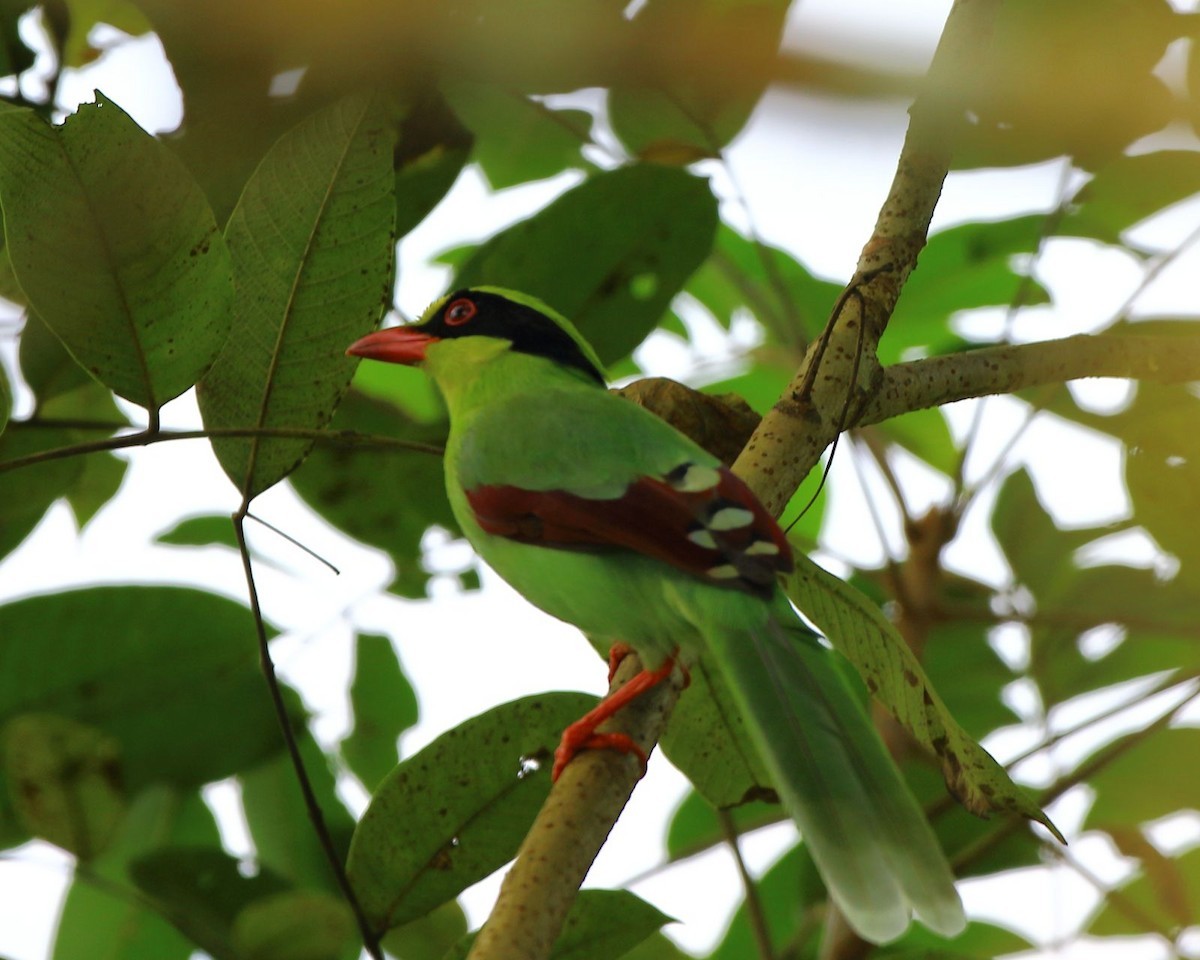Common Green Magpie
A species of Green magpies Scientific name : Cissa chinensis Genus : Green magpies
Common Green Magpie, A species of Green magpies
Botanical name: Cissa chinensis
Genus: Green magpies
Content
Description General Info
 Photo By Arnab Pal
Photo By Arnab Pal Description
The common green magpie (Cissa chinensis) is a member of the crow family, roughly about the size of the Eurasian jay or slightly smaller. In the wild specimens are usually a bright green colour (often fades to turquoise in captivity or with poor diet as the pigment is carotenoid based), slightly lighter on the underside and has a thick black stripe from the bill (through the eyes) to the nape. Compared to the other members of its genus, the white-tipped tail is quite long. This all contrasts vividly with the red fleshy eye rims, bill and legs. The wings are reddish maroon. It is found from the lower Himalayas in north eastern India in a broad south easterly band down into central Thailand, Malaysia, Sumatra and northwestern Borneo in evergreen forest (including bamboo forest), clearings and scrub. This bird seeks food both on the ground and in trees, and takes a very high percentage of animal prey from countless invertebrates, small reptiles, mammals and young birds and eggs. It will also take flesh from a recently killed carcass. The nest is built in trees, large shrubs and often in tangles of various climbing vines. There are usually 4–6 eggs laid. The voice is quite varied but often a harsh peep-peep. It also frequently whistles and chatters. 
Size
39 cm
Nest Placement
Tree
Feeding Habits
Common Green Magpie primarily consume insects like beetles and crickets, as well as small frogs, snakes, lizards, bird eggs, and nestlings. Occasionally, common Green Magpie eat carrion and may include fruits in their diet. They forage in dense vegetation, from ground to canopy, often in mixed species groups, avoiding open spaces.
Habitat
Common Green Magpie primarily inhabits tropical and subtropical broadleaf evergreen forests, as well as mixed deciduous woodlands. It has a preference for regions with dense shrubbery and bamboo thickets, often found along watercourses. It thrives in areas such as forest edges, including those adjacent to tea and cardamom plantations and secondary forests frequently located in foothill regions.
Dite type
Omnivorous
General Info
Feeding Habits
Bird food type

 Photo By Arnab Pal
Photo By Arnab Pal Scientific Classification
Phylum
Chordates Class
Birds Order
Perching birds Family
Crows and jays Genus
Green magpies Species
Common Green Magpie